Aerospace One
By Lester Anderson
2012-08-12
| Manufacturer: | Quest  | |
| Diameter: | 1.3800 inches | |
| Length: | 23.0000 inches | |
| Skill Level: | 3 | |
| Style: | Futuristic/Exotic |
Did some work on this kit today. So far, not to bad of a kit. I will detail the "gotcha's" with photo's and descriptions where necessary.
She is a futuristic version of the USAF presidential carrier "Air Force One". (Although that airplane only carries that title when the president is actually on board.) Powered by Estes or Quest 18 mm engines, possibly even the AeroTech composite 18 mm engines.

I plan on following the direction to the best of my ability, yet I do plan on some slight moddifications of my own.
Construction
2012-09-08
This is my second Quest kit, so I am starting to look for their standard flaws. I will point them out when I run into them.
Step 1 thru 6 deal with motor mount construction. I doubt any one really needs me to show them how to mark a engine mount tube, so no picture for step 1. Step 2 was simply taping the engine hook to the engine mount tube, where I encountered my first "gotcha". The machine Quest uses to build their engine hooks must be increadably precise, because the spine is ruler straight. Apparently all Quest hooks need to be "massaged" because the hooks on my escort fighters for this build needed adjusted also.
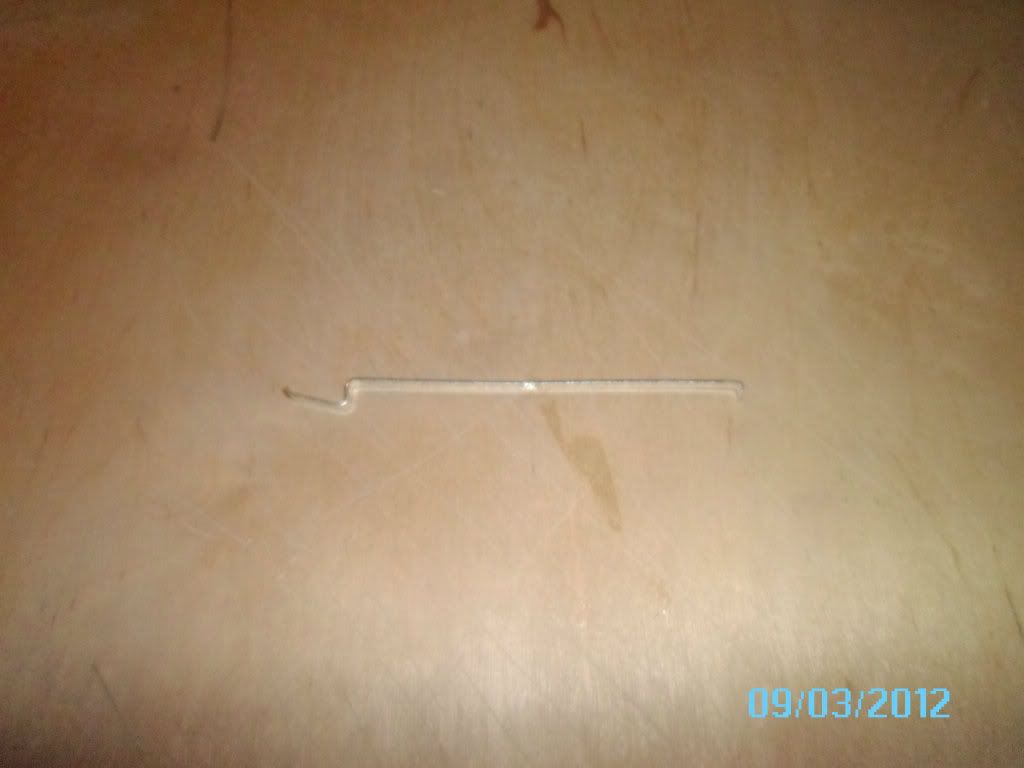

Before After
I also noticed that the thrust ring stuck out a little from the motor mount tube. A slight shaving next to the engine hook took care of that. Then it was just a matter of gluing in the thrust ring.
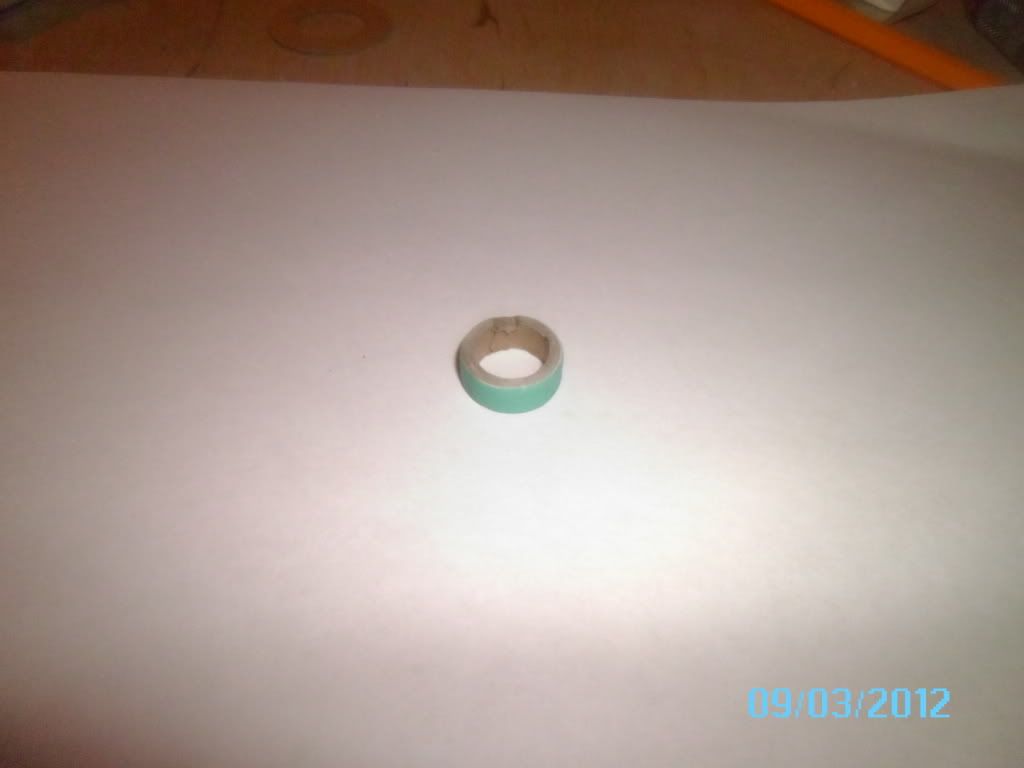
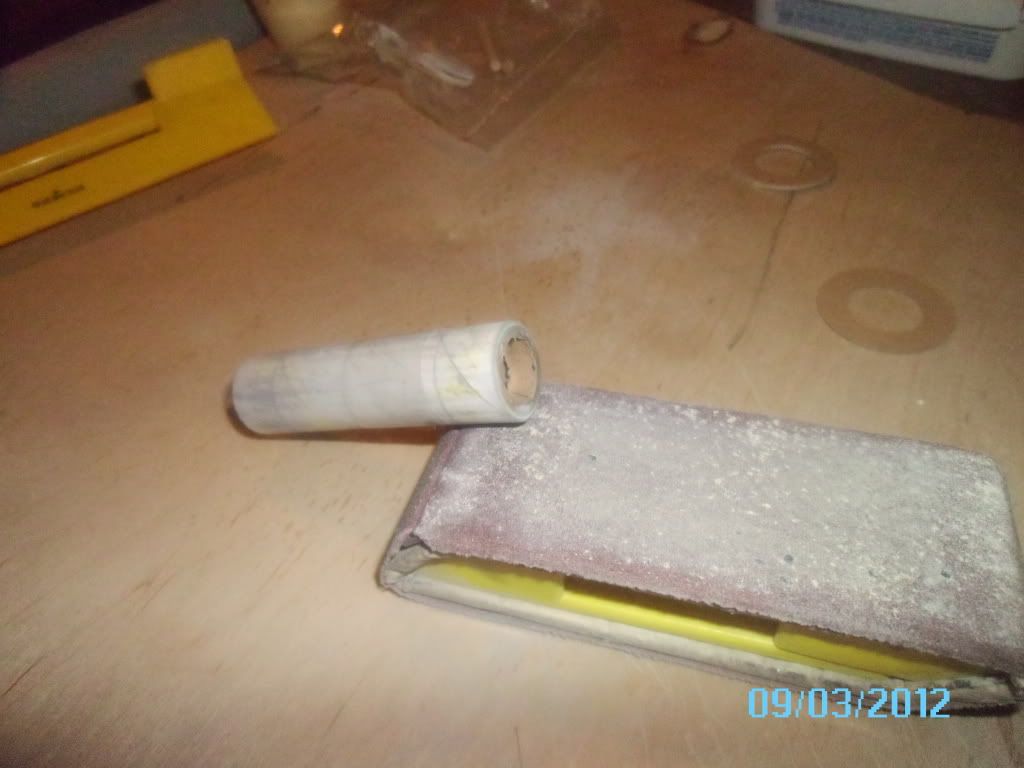
This finally finishes up step 3. Step 4 was tying the 2 shock cord pieces together, something any one can do. Step 5 called out for tying the kevlar end of the shock cord around the motor mount. Step 6 is installation of the centering rings. Here comes another surprise. NO relief cut for the aft centering ring to let the engine hook move. A little carving with the ol Dremmel tool fixed this, but I suppose a sharp knife could have also been used. Once I fixed the aft centering ring, gluing them to the motor mount tube was next (step 6).
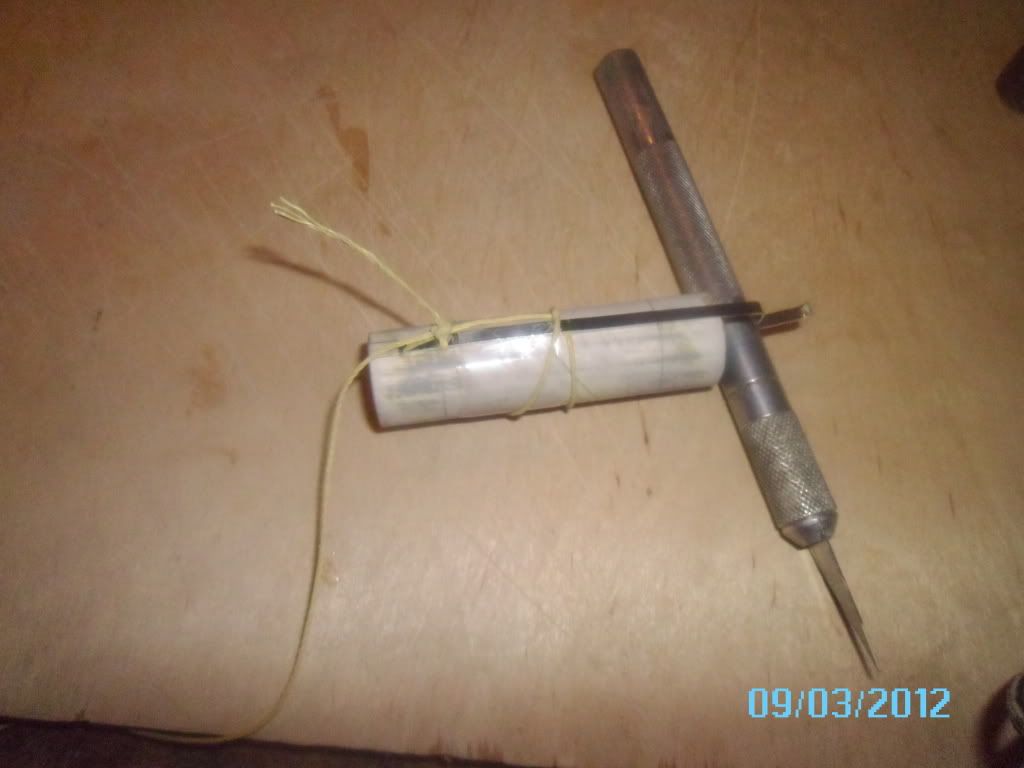
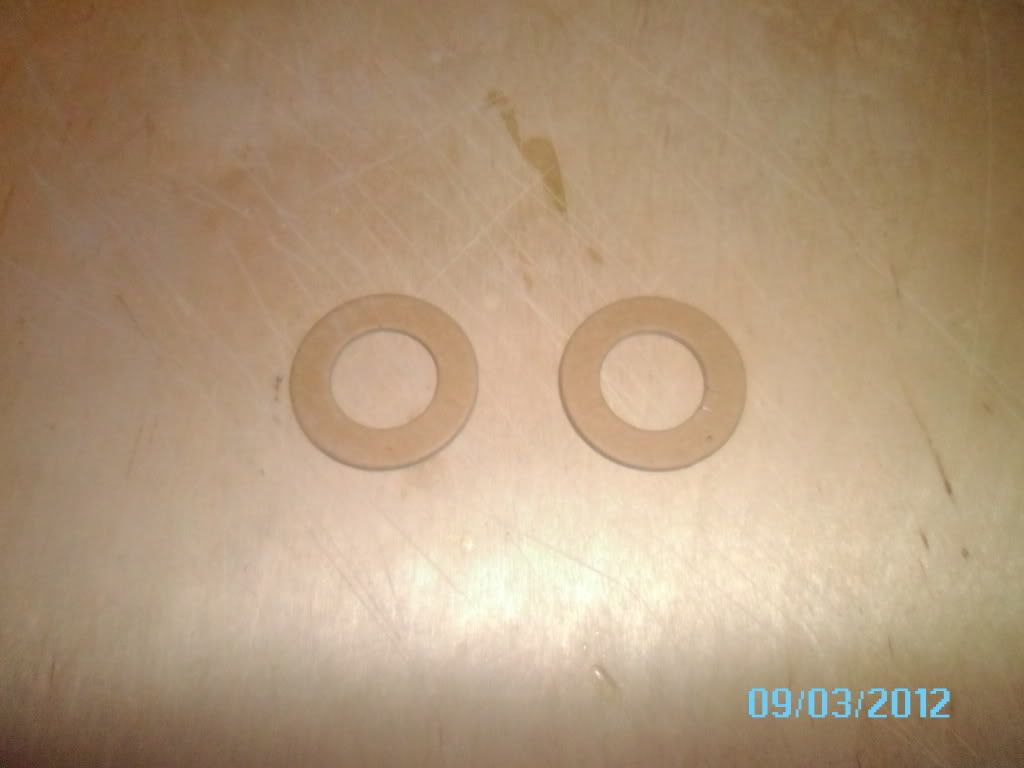
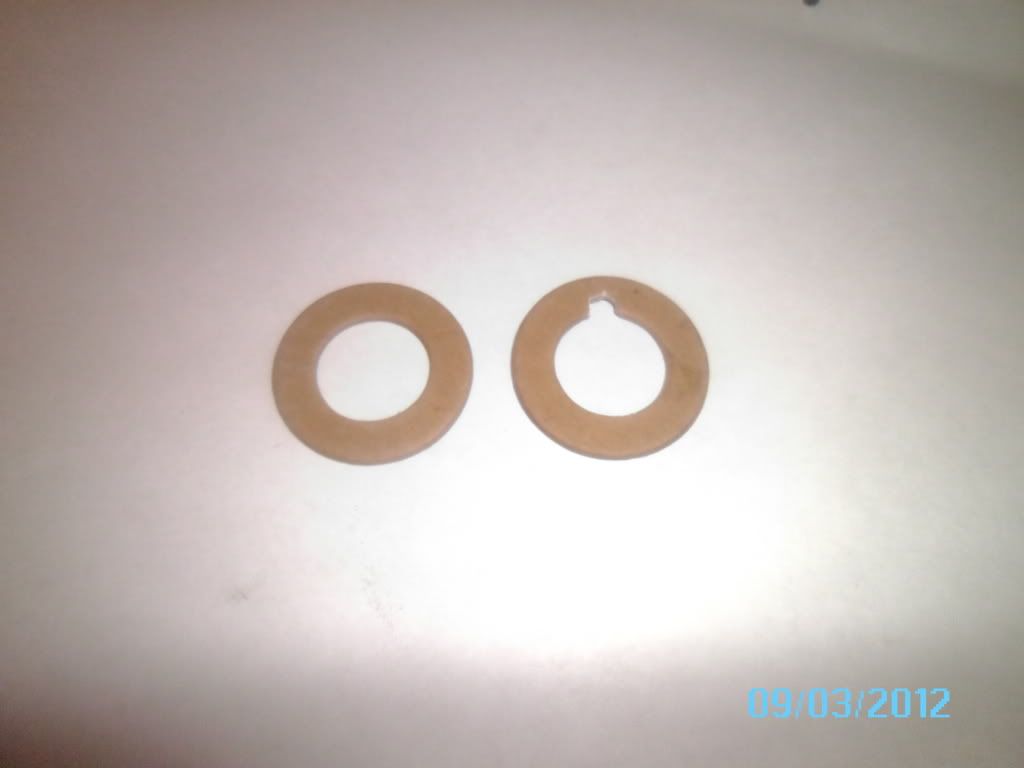
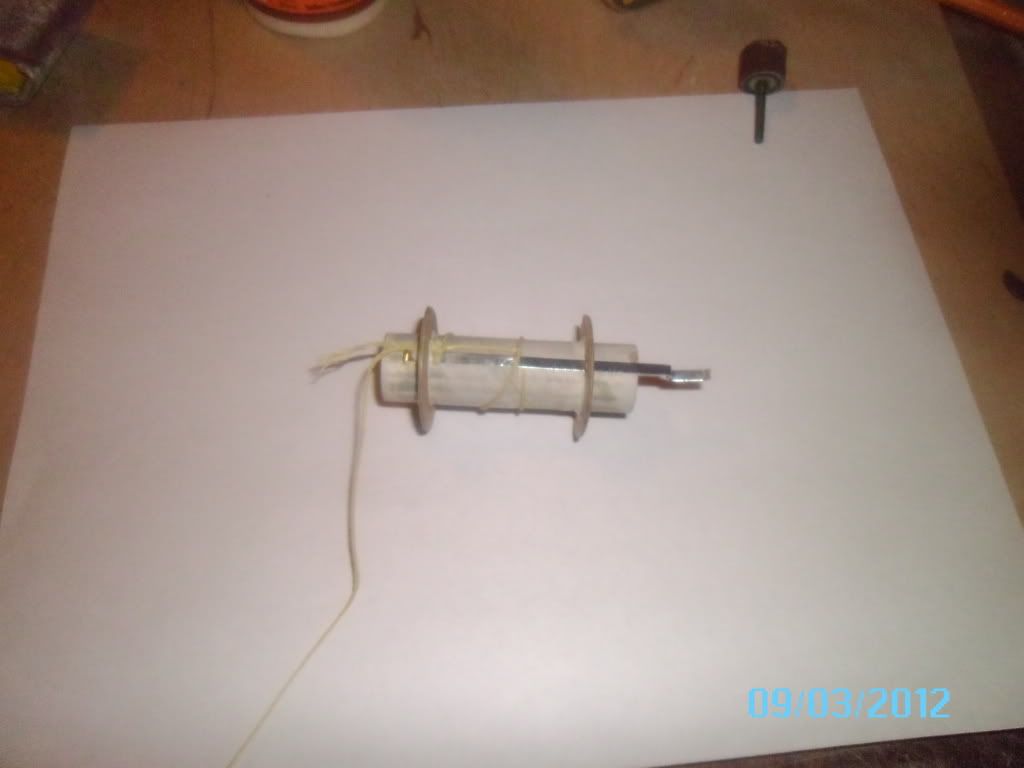
Step 7 is simply marking the body tube. Step 8, put the motor mount into the body.
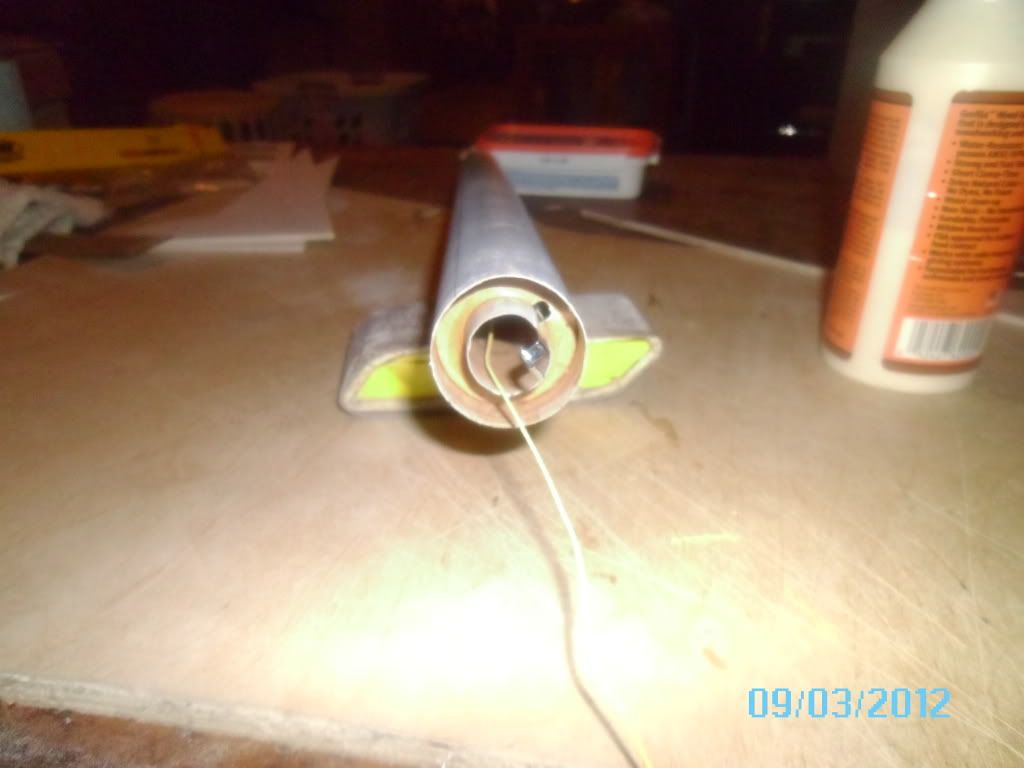
Step 9 thru 12, fin prep. I did this first. Lately I have been glue and paper covering my fins for increased strength. I also think that this will be my last rocket to do this with, as epoxy and paper gives a stronger fin with a better surface finish.
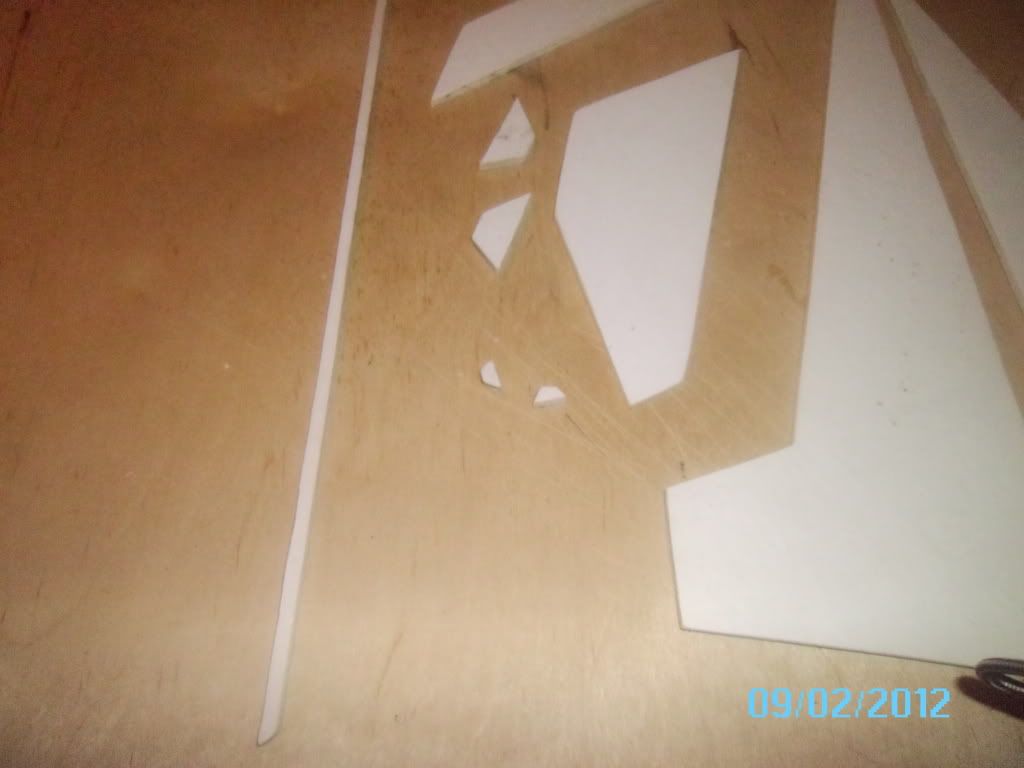
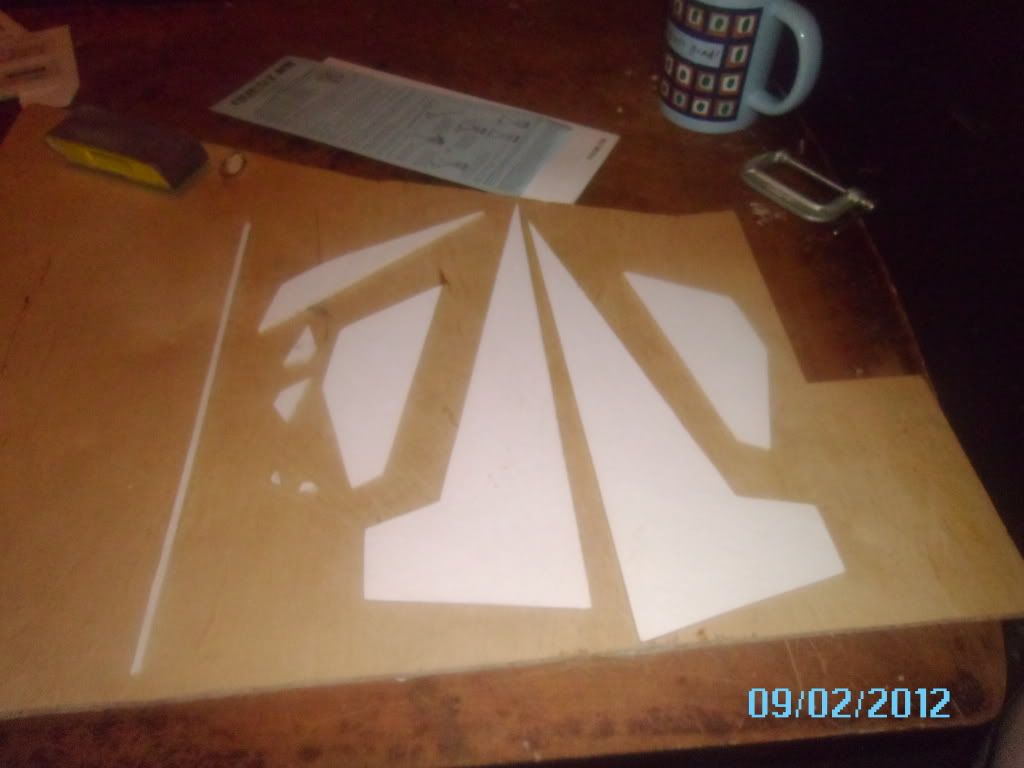
Step 13 to 17 details fin instalation. You start with the spine fin with the "antenna" fins glued to it. This is because the main wing fins glue to the spine fin, with their tips resting on your work surface. #15 is then the rudder fins, and they are not glued to the root. Rather they get glued to the body along the side of the fin. The intake fin is next, followed by the canard fins.
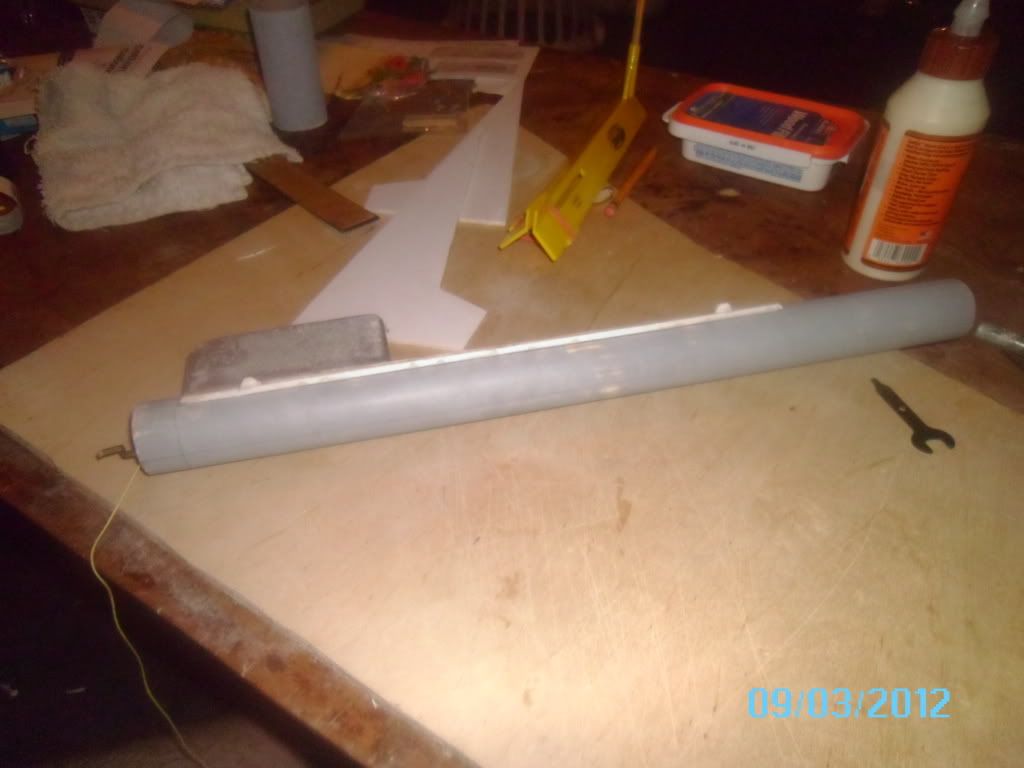
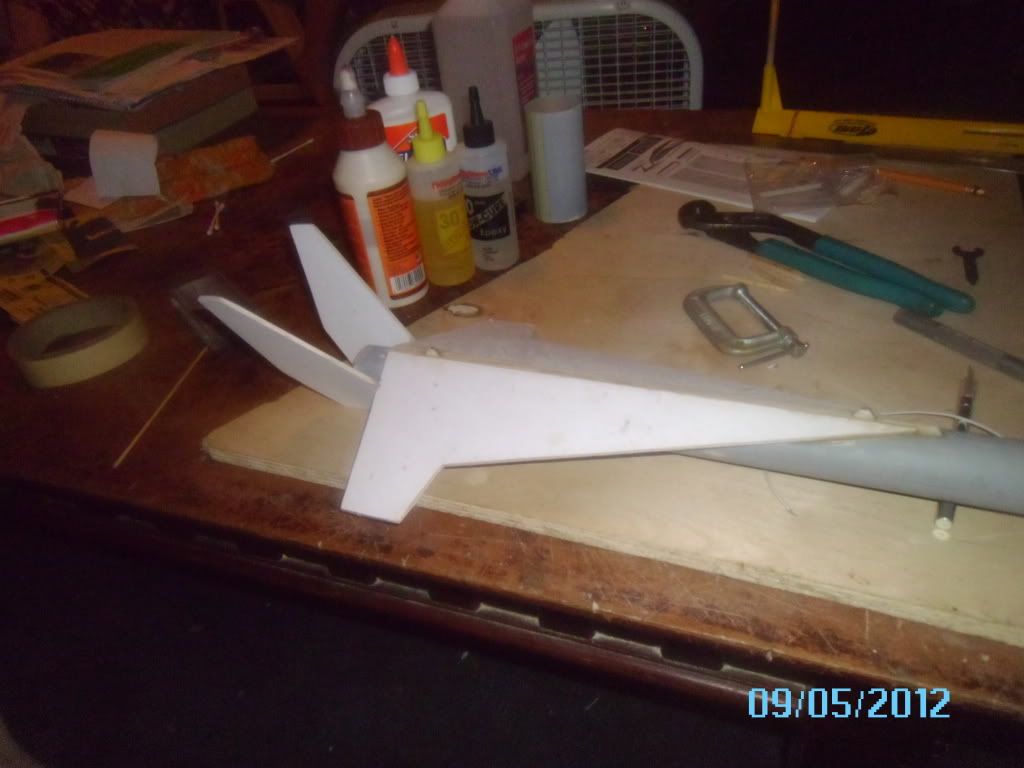

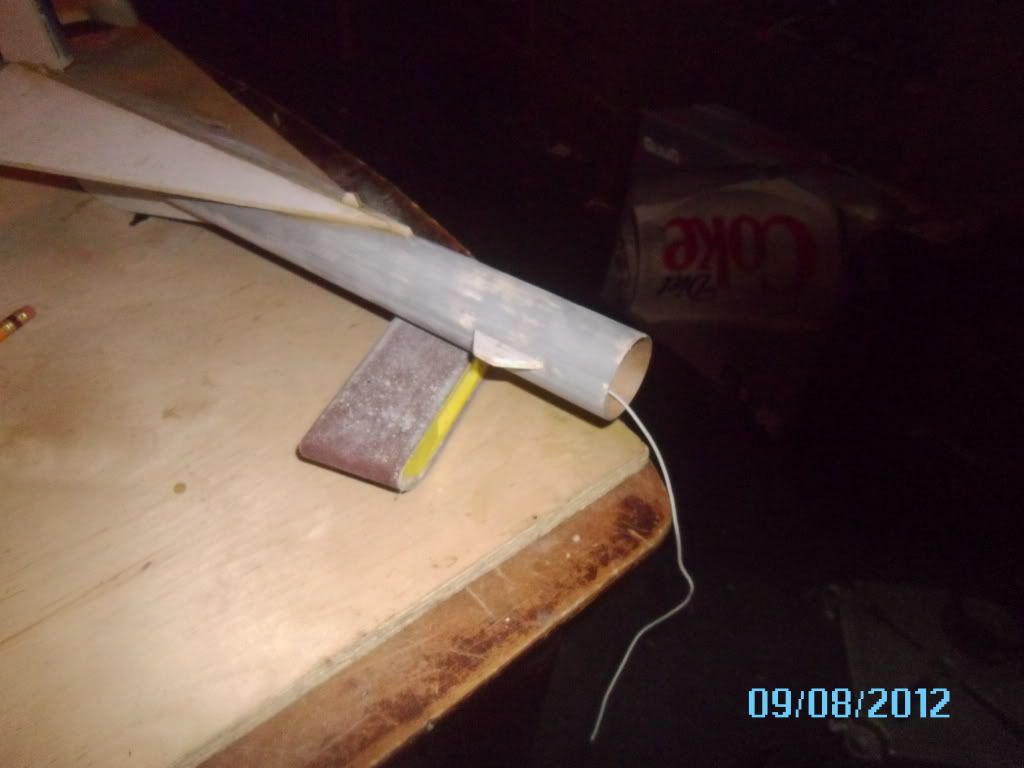
One minor "gotcha" on the wing fins is that the root edge is perpendicular to the sides, yet this leads to a big gap at the root edge. Here is where having a Dremmel tool helped out the best, as I was able to bevel the roots to make a tighter fit.
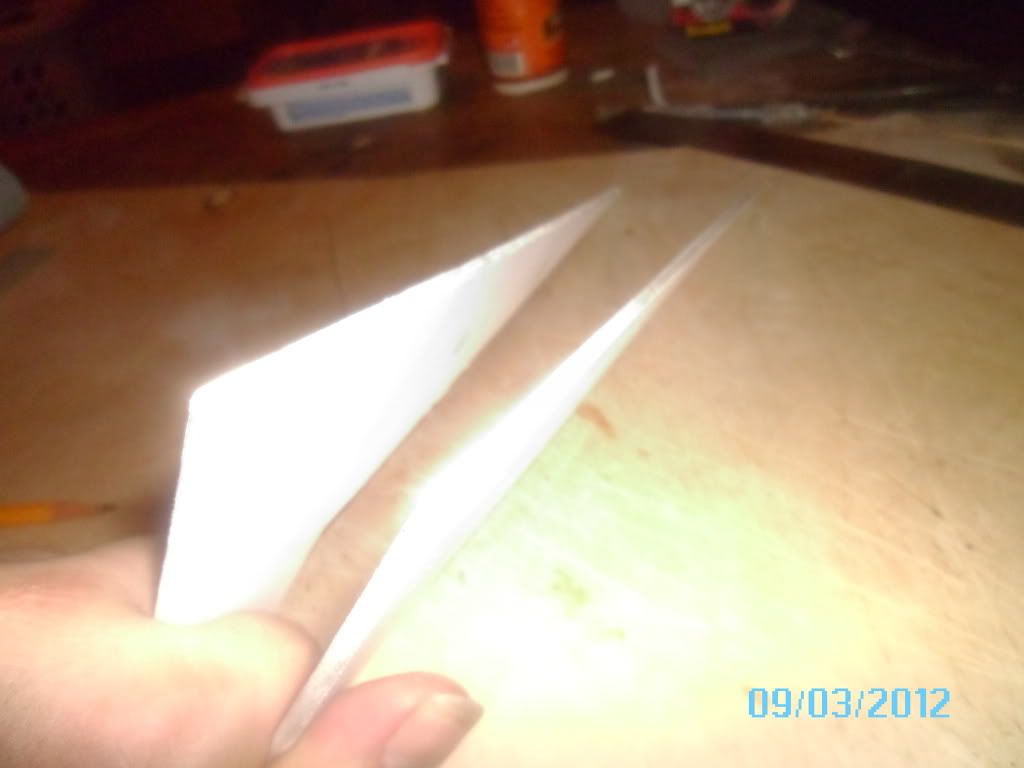 dang flash washed out the detail I wanted to show
dang flash washed out the detail I wanted to show 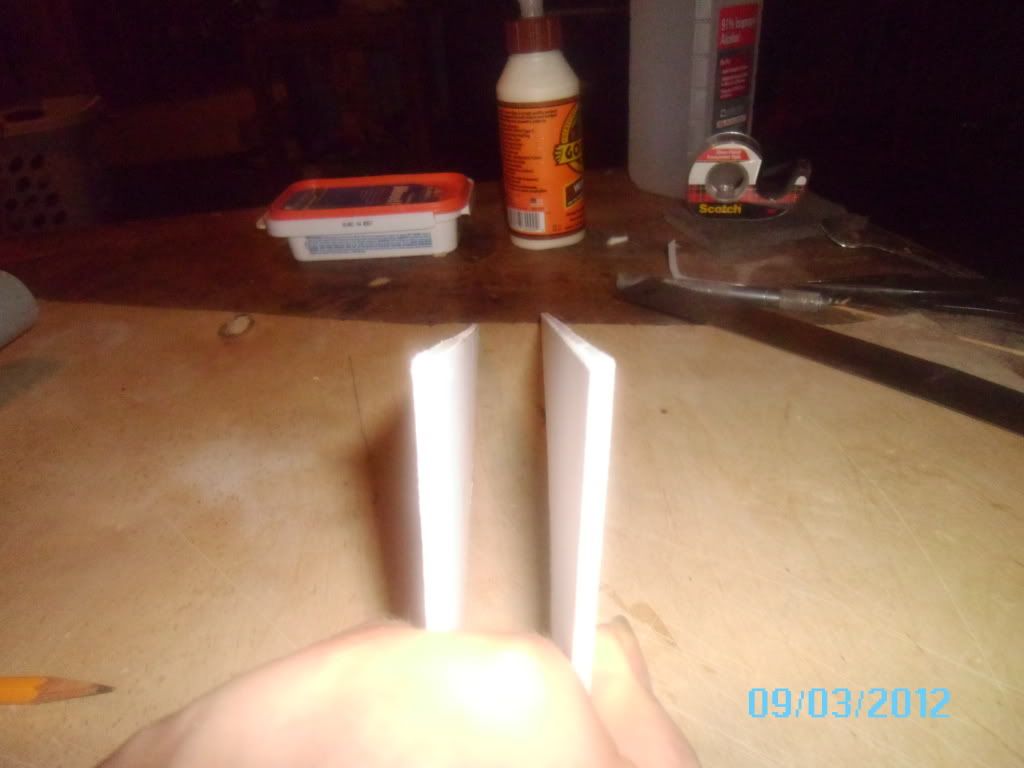
Step 18 &19 deal with gluing the "communication antenna's" to the wing and rudder tips. I pointed mine to enhance the detail. Step 20 concerns gluing on the launch lug.
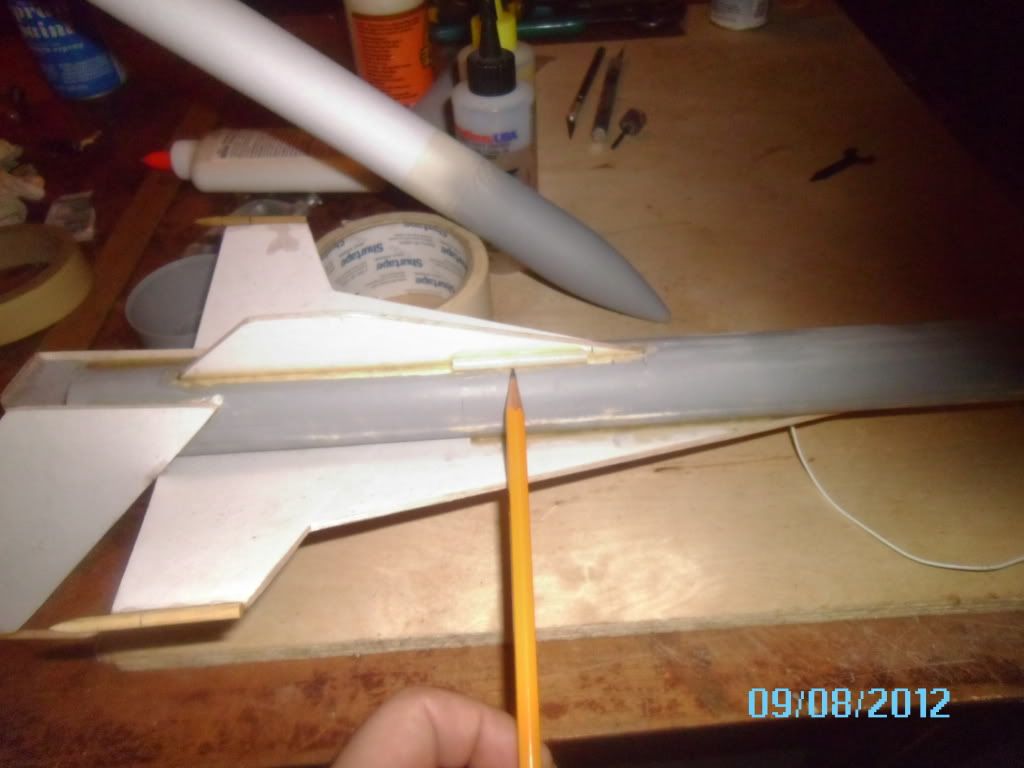 And I forgot to photograph a separate shot of the antenna install.
And I forgot to photograph a separate shot of the antenna install.
Step 21 to 26 deal with paint, which will be the next entry.
Sponsored Ads
 |
 |











